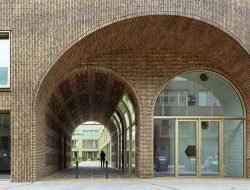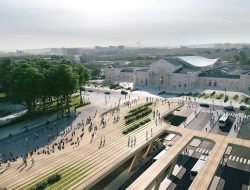In cities, the rehabilitation of housing or offices is a powerful engine for transforming the housing stock. It seems less complex to undertake an urban renovation than a demolition or reconstruction. Here’s why.
Imagine for a moment the appearance of gigantic cranes, bulldozers and an armada of trucks in a densely populated neighbourhood. All intended to destroy, crush and evacuate thousands of tonnes of rubble, waste and other left-overs of a building that has become deficient in the urban landscape. Think of the endless nuisances that this will cause: dust, traffic, noise pollution, vibrations…
Real estate developers have long understood that it is less difficult to renovate a building in the city than to destroy it and then rebuild a new one. At the same time, an intelligent and respectful renovation always involves a series of measures and precautions that are essential to the progress of a large-scale project, in order to affect the daily lives of the surrounding residents as little as possible.

Renovation © Paul Hanaoka
A permanent control process
Urban renovation automatically needs anticipation. By anticipating possible problems, one can reduce their impact on the site and its residents. Hence the importance of good communication with the neighbours (but also local businesses and the authorities), rigorous planning of the comings and goings of trucks, a rhythmic phasing of works and respect for the surrounding activities. One could even go as far as adapting the schedule of noisy tasks to the activities in the neighbourhood.

Renovation © Mike Kononov
The preparation and design phases are also crucial, in particular a complete identification of the soil conditions and the nutrients under the structure to be renovated. Other issues to take into consideration: the safety of passers-by, acoustic measurement of noise on the site, control of vibrations, logistics and supplies on site (storage spaces are often limited by the size of the building to be renovated), the protection of neighbouring buildings and the public road, strict compliance with legal provisions, precise and anticipatory monitoring of the necessary equipment and materials and proactive risk management.
Even if an urban renovation remains a complex undertaking, it allows greater respect for the environment and the neighbourhood. The philosophy is always oriented towards solutions that respect the quality of urban life.
Tags: carbon, carbon neutrality, cities, climate, demography, démolition, housing, office, reconstruction, sustainability, urban renovation





































